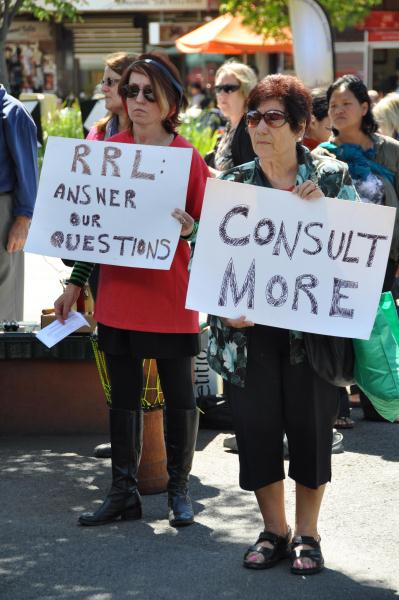By ALESHA CAPONE
BRIMBANK residents living near the Regional Rail Link have continued their campaign to have a bigger say in the project’s construction.
Sunshine North resident John Kodric has sent letters to the Regional Rail Link Authority (RRLA) and Public Transport Minister Terry Mulder.
“To get to the point, we do not want a noise barrier wall directly in front of our homes now or ever,” his letters said.
Mr Kodric said the wall, proposed by the RRLA, would become a “graffiti ridden eyesore” and provide hiding spots for criminal activity.
The elderly resident also said he and other residents were concerned the proposed wall would not properly mitigate noise levels once freight trains began travelling along the line, to the future $1.5 million Truganina Western Interstate Freight Terminal.
“We cannot even sleep properly because of the existing noise levels, and this is only the beginning,” he said.
Mr Kodric also said the RRLA “has not been careful in its removal of vegetation in our area and has to date not carefully replanted vegetation like they have in other areas”.
However, a RRLA spokesperson said there had been “no significant vegetation removal as a result of the project, although some removal was necessary to make way for construction”.
“With extra trains, there will be an increase in rail noise for some residents already living next to the rail line,” she said.
The spokesperson said the RRL project had taken action to offset this, by providing “scientifically-tested noise barriers which will help to block the main source of rail noise”.
She said the RRL’s noise assessments had taken into account the likely number of train movements, including passenger and freight trains, both immediately after the project’s completion and 10 years after completion.
She said the proposed noise walls would be made with a material which can be shaped to discourage graffiti and easily cleaned with high-pressure water.
The walls have also been designed to avoid the creation of closed areas and to incorporate trees and landscaping.
“Project staff have had many productive conversations with residents about the identification and design of noise barriers, associated landscaping and construction,” she said.


